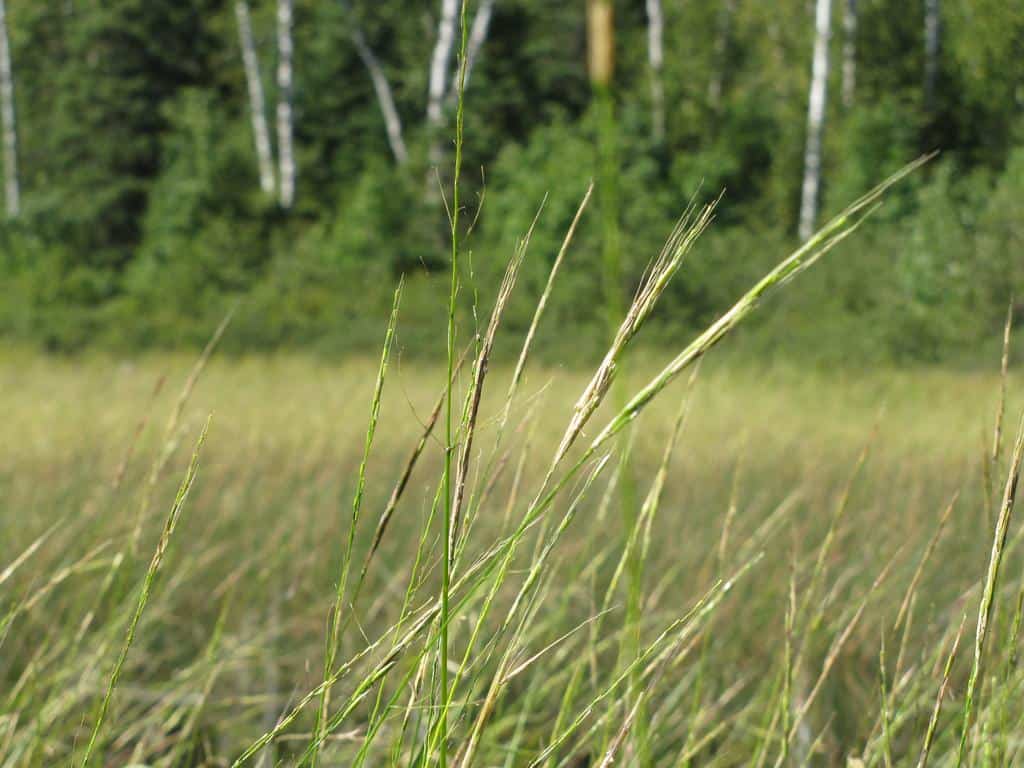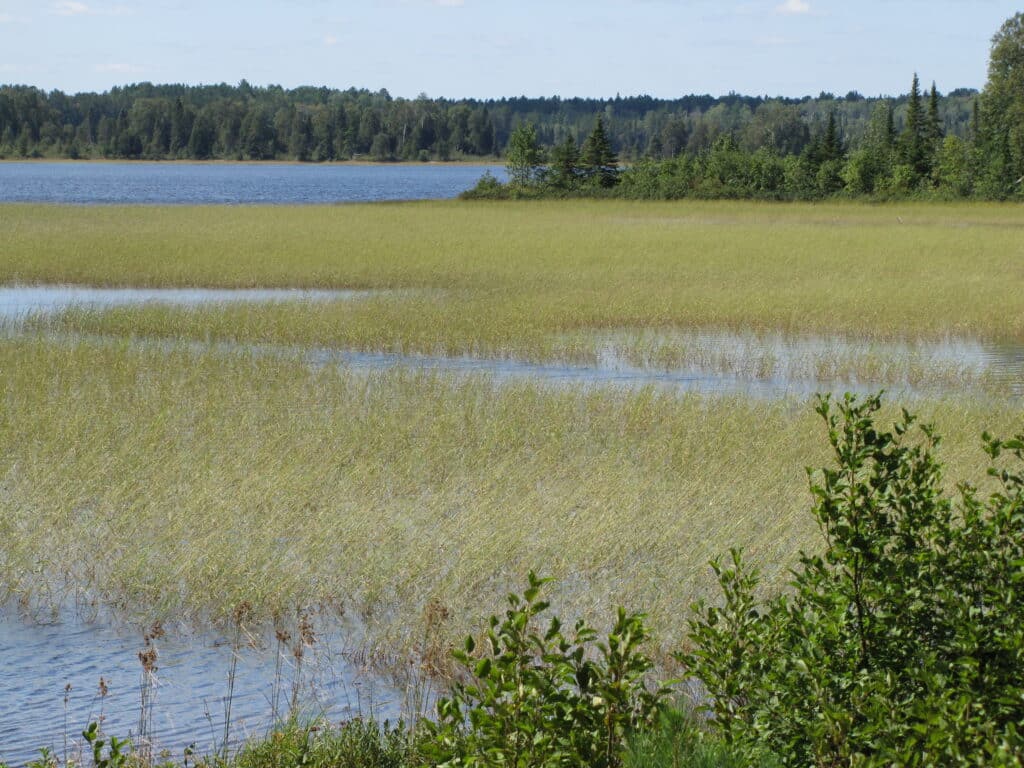
People in canoes will soon be pushing their way through thick stands of wild rice in northern Minnesota, knocking the grain off its stalks into the bottom of their boats. The nutritious plant has been a staple of human diets for millennia and provides valuable habitat and food for migrating waterfowl.
Wild rice, known as manoomin in the Ojibwe language, grows in shallow water, including many places in the Boundary Waters Canoe Area Wilderness, Superior National Forest, Quetico Provincial Park, and beyond. Although many wild rice waters have been degraded in the last 200 years, the state of Minnesota still has more than 2,000 wild rice lakes and rivers, more than any other state in the nation. The plant is Minnesota’s official state grain.
Harvesters are hopeful that this will be a good year for the crop, which can vary widely depending on seasonal conditions, water levels, and more.
“Favorable weather without too much heavy rain early in the season has been a positive for wild rice,” said Ricky Lien, DNR wetland habitat team supervisor. “While we’re hearing reports of good rice conditions from many places, we know that conditions can vary between regions or even adjacent lakes.”
The wild rice harvest season runs from August 15 to September 30, but harvesters are required to ensure that rice is ripe and easily falling off the plant before they harvest. Approximately 13,000 members of Native American tribes are believed to harvest wild rice each year, joined by about another 1,800 non-tribal harvesters. Each tribal harvester collects on average more than 700 pounds of rice each year.

Manoomin is a sacred resource for Ojibwe people, representing a prophecy fulfilled. When their ancestors began a migration west across the Great Lakes, legend says they knew they had found a new homeland when they found “food that grows on water.” Before they arrived, the region’s Dakota people and predecessors also harvested wild rice.
The grain remains an essential part of many Ojibwe peoples’ diets, and harvesting it is considered a spiritual practice. In a recent blog post from the Friends of the Boundary Waters Wilderness, communications director Pete Marshall shared his experience helping harvest rice with members of the Fond du Lac Band of Lake Superior Chippewa. He talked with Tom Howes, Natural Resources Manager of the Fond du Lac Band of Lake Superior Chippewa:
“The Ojibwe have a philosophy of reciprocity. According to legends, the Algonquin people came from the east, migrating with the promise that they would arrive in a land of abundance, a place where food grows out of the water. Archeologists have found 3,000-year old pottery with ash residue left from wild rice. It’s been sustaining us for 3,000 years. Now it’s our turn to take care of the rice.” – Tom Howes
Climate change, invasive species, and water pollution all present risks to the grain’s long-term survival.
Despite careful management, regulations, and responsible harvesting practices, wild rice is threatened by human activities. Ojibwe and environmental groups have been sounding the alarm and advocating to “take care of the rice.”
Pollution from mining operations in northern Minnesota is perhaps the best-known problem. Both taconite mines and proposed copper-nickel mines can discharge high levels of sulfate, which causes an ecological cascade that can kill wild rice.
Northern Minnesota’s rapidly warming winters are also a concern. Wild rice is an annual plant that grows from seeds each year. But it is believed to need a hard freeze and cold spring temperatures to properly germinate. The average winter temperature in northern Minnesota has risen six degrees since 1970. As those conditions change, some waters may lose their wild rice.
“This is a plant that’s adapted to northern, harsh growing conditions. So even in northern Minnesota, northern Wisconsin, that’s the southern edge of its range,” Peter David, a wildlife biologist with the Great Lakes Indian Fish and Wildlife Commission, told MPR News in June.
Non-native plant species have already pushed wild rice out of some places where it historically grew. As these invasive plants spread, they could continue to hurt wild rice stands. On Rainy Lake, invasive hybrid cattails, which former thick mats, have eliminated vast stands of rice.
No matter what the future holds, in the weeks ahead, people will push canoes through stands of rice across Minnesota and continue a practice that has persisted for thousands of years.
More information:
- Wild Rice – 1854 Treaty Authority
- Science, tradition and the Fond du Lac Band’s fight against copper-sulfide mining – Friends of the Boundary Waters Wilderness
- Wild rice management – Minnesota DNR
- The Food That Grows Out of the Water: The Economic Benefits of Wild Rice in Minnesota (PDF) – Earth Economics
- Wild Rice & Sulfate – WaterLegacy
- Climate Change Threatens the Ancient Wild Rice Traditions of the Ojibwe – Scientific American
- Crop failure rate for wild rice is increasing with climate change – MPR News

